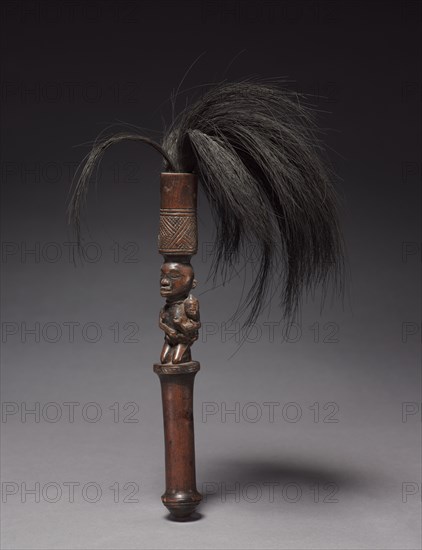
Sujet
Flywhisk, late 1800s-early 1900s. Creator: Unknown.
Légende
Flywhisk, late 1800s-early 1900s. Flywhisks had the same purpose as scepters in Central Africa: rather than whisk away flies, they denoted status, rank, and function. Although commonly associated with chiefs and titleholders, they were likely also owned by ritual specialists, diviners, and healers. Little is known about their actual occurrence in Kongoland, but based on evidence from other regions, they may also have been used to purify ritually polluted spaces; to bless people, places, or things by sprinkling them with liquids; or to settle disputes in court when brandished by a judge. Rare are flywhisks depicting maternities, like this finely carved miniature of a woman kneeling-a sign of obedience and respect-who holds the child clinging to her body.
Crédit
Photo12/Heritage Images/Heritage Art
Notre référence
HRM19F81_365
Model release
NA
Property release
NA
Licence
Droits gérés
Format disponible
68,9Mo (4,1Mo) / 36,4cm x 47,4cm / 4300 x 5601 (300dpi)